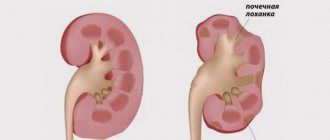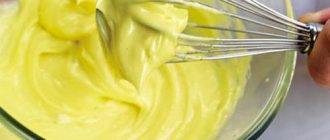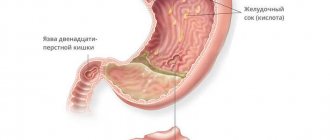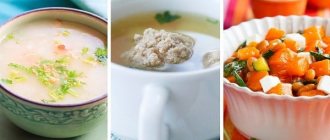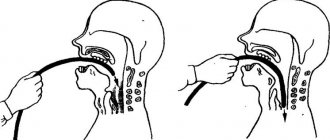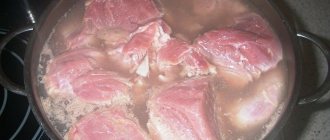In today's rapidly developing world, few people can be surprised by such a pathology as acute or chronic gastritis. Almost every modern person from time to time feels the unpleasant characteristic symptoms of this disease, and one cannot do without such an important factor as a diet for gastritis with high acidity. The main cause of all forms of gastritis and indigestion and digestion is a violation of proper diet, constant stress, and the consumption of very harmful foods.
Eating low-quality products can lead to any form of gastritis
If for some time symptoms such as debilitating heartburn, acute pain and long-term heaviness in the stomach, morning nausea followed by vomiting, one can judge the development of a pathology such as gastritis with high acidity, the treatment of which at the initial stage can be carried out in standard home care. conditions, following simple rules
What you can and cannot eat
For acute gastritis or stomach ulcers, a special therapeutic diet is required. After the doctor diagnoses the patient, he is prescribed treatment and a diet with special nutritional rules. Using the table with permitted products, you can determine what can be consumed for gastritis and what cannot be consumed.
What diet for gastritis of the stomach in an adult with low stomach acidity is described in the table:
| Product | Can | It is forbidden |
| Bakery | Rusks, dried white bread or loaf | Freshly baked products, fresh yeast products, sweet products |
| Groats | Oatmeal, rice and buckwheat | Barley, millet, beans, wheat |
| Soup | Vegetable and fish liquid and puree soups | Sour okroshka, cabbage soup, rassolnik, soup with sour vegetables and a lot of meat |
| Garnish | Potatoes, carrots and beets | Radishes, onions, cucumbers, peppers, pickled and salted vegetables |
| Egg | Omelet and soft-boiled | Hard-boiled and butter omelette |
| Fruits | Peelless, soft and baked | Green (unripe), prunes, dried apricots and small seeds |
| Beverages | Herbal tea and sweet diluted fruit drinks | Kvass, alcohol, soda, cranberry and lemon juice |
For patients with gastritis with high stomach acidity:
| Product | Can | It is forbidden |
| Bakery | Dried loaf or crackers | Fresh yeast baked goods, rye bread, bran bread |
| Cereals and pasta | Spaghetti, rice, buckwheat, semolina, oatmeal, semolina | Legumes, corn, wheat, pearl barley and barley |
| Vegetables | Pumpkin, cabbage, carrots, zucchini, cauliflower | Spinach, cabbage, onion, garlic, hot pepper and pickled vegetables |
| Fish, meat | Lean turkey, veal, beef and chicken cuts | Fatty, fried meat and salted fish |
| Sweets | Decoction, fruit drink, jelly, jelly, marshmallows, sweet fruits and marmalade | Chocolate, ice cream and dried fruits |
| Milk products | Low-fat cheese, milk, cottage cheese | Sour dairy products, fatty cottage cheese and cheese |
It is extremely important to distinguish between 2 types of gastritis: with high and low stomach acidity.
The type of diet depends on the diagnosis; products for different types of gastritis differ. Properly selected products will help improve the condition and avoid exacerbation.
Characteristic features of the disease
To fully understand the diet and be able to independently create a healthy menu, it is necessary to navigate the main features and characteristics of hyperacid gastritis, a disease accompanied by significant acidity.
A similar problem develops due to the production of a large volume of acid. In approximately 90% of situations, the main cause of the disease is the penetration of Helicobacter pylori into the intestines. Also, the rapid development of the disease is influenced by factors such as irregular diet, bad habits such as smoking and drinking alcohol, as well as long-term stress.
Treatment of acute or chronic gastritis with increased acidity begins when unpleasant signs appear, such as:
- Feeling of constant heaviness and bloating. This symptom is one of the main ones and often occurs during an exacerbation. Patients note a feeling that the stomach is very swollen from the inside and resembles a ball.
- Vomiting that often occurs in the morning with preliminary nausea, which is especially typical before eating. If the stomach is empty, the acid produced begins to irritate the tissues. To stop this process, the body at the level of reflexes tries to completely get rid of the acid, causing vomiting and emptying the stomach.
- Belching and heartburn with a rather unpleasant sour taste. These signs usually occur immediately after eating or during sleep if a person sleeps with his head low.
- Constant failure in daily bowel movements. When an inflammatory process develops in the stomach, unpleasant phenomena such as long-term constipation and diarrhea causing dehydration may occur. Such failures appear due to a standard digestive failure.
Gastritis may well be a consequence of non-compliance with norms and diet
The diet for gastritis with high acidity and the menu for every day are necessarily aimed at the complete elimination of all unpleasant symptoms. With a well-structured menu, you can quickly relieve an acute inflammatory process, while at the same time you can effectively protect the walls and tissues of the intestines and stomach from the adverse effects of juice, which contains a lot of hydrochloric acid.
Expert opinion
Smirnov Viktor Petrovich Dietitian, Samara
Nutrition for gastritis is already a therapeutic diet, and when forming it, it is really necessary to take into account the type of secretion: whether it is increased, normal or decreased. There are dishes that greatly stimulate the production of gastric juice. These are rich broths, spices, hard-boiled eggs and especially yolks, tomato sauce, strong tea and coffee, and so on. Such foods are prohibited during exacerbation of any form of gastritis, and even more so during heartburn and high acidity. Milk, soft-boiled eggs, pureed vegetables, and white bread have a weak stimulating effect. Such simple knowledge should be used when forming a diet, but regardless of the type of gastritis, it is imperative to follow the principles of mechanical, chemical and thermal sparing of the gastric mucosa. This means that you cannot take large quantities of any food at once, eat coarse plant fiber and connective tissue, such as stringy meat and cartilage, and you cannot eat very cold and hot foods.
Nutrition rules
There are several general dietary guidelines for gastritis with high acidity. By applying special rules for eating and eating certain dishes, you can achieve an increase in the pH of the stomach contents, and therefore improve the patient’s condition. These rules are quite simple:
- In order not to further irritate the damaged gastric mucosa, you need to monitor the temperature of the food you eat - it should not be too cold or too hot.
- You need to eat according to a specific schedule - preferably, meals should be at the same time every day.
- The amount of food consumed should be small: you need to eat a small amount of food at one time so as not to overload the stomach.
- It is better to split up meals - there should be 5 or more of them per day.
- Food must be chewed thoroughly.
- It is better to avoid rough and hard foods during the treatment period.
- Drinks can be consumed between meals.
- Chewed food should not be washed down, and if necessary, you can drink liquid in small sips only after the food has been swallowed.
It is also better to avoid excessive consumption of overcooked or pureed food - this can reduce the activity of the digestive process.
Diet for relapse
During remission of gastritis or exacerbation of superficial gastritis, it is necessary to eat according to the principles of the “Table No. 1” diet.
Please note: If the patient has severe stomach pain or nausea, then the diet includes fasting days, on which you can only drink mineral water and weak tea.
When the period of exacerbation and severe stomach pain pass, the patient switches to eating soups, semi-liquid foods, and cereals. Diet food is steamed, boiled, and then chopped into pieces or pureed. Spices (except dried herbs) and large amounts of oil cannot be added.
Video
While on a diet, you should not drink sweet carbonated drinks, juices from a package, coffee or alcohol. When following a diet, fruits and vegetables should not be sour, as should compotes and jelly prepared from them.
Summing up
The diet for gastritis should be followed during the period of exacerbation and when remission is achieved. Such a diet must be followed throughout life; proper nutrition will not only not harm a sick person, but will heal and strengthen his body.
If you adhere to all the rules listed above regarding the principles of well-designed nutrition, a person can lead a full active lifestyle for a very long time and, more importantly, not end up in clinics with dangerous attacks of exacerbation.
How to create a menu
When planning your diet, you need to know and adhere to the rules of the diet for gastritis:
- Eat only warm food. If you have gastritis, you should not drink cold or very hot drinks or eat frozen foods - they are harmful to the stomach. All food should be at room temperature so as not to irritate the gastric mucosa.
- Lack of rough food. It is necessary to exclude the possibility of mechanical irritation of the stomach with large pieces of food or food with a rough texture. It is not recommended to consume bran and vegetables with a lot of fiber. It is recommended that all solid dietary foods be crushed and chewed thoroughly.
- Small meals 5-7 times a day.
- Don't drink. It is not recommended to drink an hour before meals and an hour after, so as not to dilute the gastric juice, otherwise the food will be poorly digested.
You can plan a menu for gastritis yourself or find it on the Internet. The main thing is to choose the right menu for your type of gastritis.
Video
What should you not eat?
If you have a sick stomach, you should exclude from your diet:
Heavy fatty foods, which complicate the digestion process and are difficult for the body to absorb. Fatty foods can be tough for someone suffering from acidity. While fried foods may look crispy, they are high in fat. Foods high in fat require more time to digest and therefore more acid.
- You should not eat spicy foods with a lot of spices, which have an aggressive effect on the walls of the stomach.
- Thick, rich broths are difficult to digest.
- The mushroom menu contains acids that destroy the gastric mucosa.
- Acidic vegetables and fruits (tomatoes, lemons, tangerines, grapefruits), the juice of which contains an excess amount of acid and contributes to corroding the walls of the stomach.
- Although tomatoes are incredibly healthy vegetables, they contain high amounts of acid. This can erode the stomach lining, causing acidity.
- It is not recommended to eat watermelon. This summer fruit is not so much harmful in itself as the juice it contains, which leads to an increase in the acidity of gastric juice.
- Carbonated drinks. They are known to cause a number of diseases such as obesity, but carbonated drinks are one of the main causes of acidity. Carbonated drinks release tiny bubbles in your stomach when you drink them. This, in turn, exerts pressure, increases the level of acidity in the stomach and provokes further deterioration of the condition.
- Alcohol, of course, is strictly prohibited during the diet. The ethanol contained in it leads to dehydration of the body, causing increased concentrations of stomach acids.
- Sweet confectionery and fresh baked goods are foods that are difficult for the body to digest.
- Fatty meat overloads the stomach.
- Chocolate, desserts with icing and nuts, and ice cream also have an aggressive effect on the gastric mucosa.
- Cheese products.
Approximate diet:
- During the diet, you need to eat 5-6 times a day with food at room temperature, prepared, if possible, in the form of puree or soufflé. Salt must be excluded from the diet. Before going to bed, you should drink a glass of warm milk.
- Eat cereal-based soups with an egg-milk mixture. In this case, cereals must be ground to increase their digestibility.
- The consumption of dairy products is not prohibited, except for cheese, kefir and sour cream. Eggs must be soft-cooked.
- You can eat honey and sugar, tea with cream and milk, fruit jelly.
- Drink plenty of water every day to flush out toxins from your body. Water helps in detoxifying the body and reduces acidity.
- Banana is an effective remedy against acidity. People suffering from acidity should eat at least one banana every day to get rid of acidity and its associated symptoms.
- Cold or warm milk helps balance the acidity levels in the stomach. Drink a glass of milk every day before going to bed.
- Almonds are useful in treating chronic acidity. You can puree the almonds in a blender to turn them into flour. Consume half a teaspoon of this powder every day with water to prevent acidity and hyperacidity.
- The meat should be lean, baked or boiled, prepared in the form of souffles, cutlets and meatballs.
Diet for the week
To think through a menu for a week for gastritis yourself, you can look at recipes suitable for the diet. On a diet, you need to eat at least 4 times a day, making snacks between main meals. Overeating during main meals is prohibited (harmful for the stomach); you should eat in small portions.
| Day of the week | Eating | Dishes |
| Monday | Breakfast | Boiled egg, toast, oatmeal |
| Snack | Natural yogurt | |
| Dinner | Pea soup with steamed fish and pumpkin puree | |
| Snack | Berry jelly | |
| Dinner | Steamed fish with vegetables, rosehip broth and a glass of kefir with cookies before bed | |
| Tuesday | Breakfast | Boiled egg, bread, 100 g of liquid oatmeal, rosehip decoction |
| Snack | A glass of apple and cherry compote, soft sponge cake | |
| Dinner | Buckwheat soup, pumpkin puree with chicken cutlets, herbal tea | |
| Snack | A glass of curdled milk with whole grain bread | |
| Dinner | A serving of noodles with steamed beef cutlet, a vegetable salad with sour cream and a glass of fermented baked milk before bed | |
| Wednesday | Breakfast | Buckwheat porridge with milk, milk soufflé with tea |
| Snack | Banana with a glass of milk | |
| Dinner | Cauliflower soup, beef zrazy with bulgur, tea | |
| Snack | Cottage cheese casserole with tea | |
| Dinner | Steamed fish with canned corn, salad with sour cream, natural yogurt before bed | |
| Thursday | Breakfast | Boiled buckwheat porridge, creamy soufflé with tea |
| Snack | 200 ml oat broth | |
| Dinner | Creamy rice soup, noodles with steamed chicken cutlets, a few spoons of peas, boiled carrots | |
| Snack | Cottage cheese with cocoa | |
| Dinner | Potato casserole with beef zrazy, herbal tea and a glass of jelly before bed | |
| Friday | Breakfast | Oatmeal, a handful of hazelnuts and milk tea |
| Snack | Milk or fruit jelly | |
| Dinner | Chicken noodles, mashed potatoes with steam cutlet and cocoa | |
| Snack | A portion of cottage cheese with honey | |
| Dinner | Boiled lentils with meatballs, bread, compote and kefir before bed | |
| Saturday | Breakfast | A portion of cottage cheese with honey, whole grain bread with compote |
| Snack | Glass of fermented baked milk | |
| Dinner | Potato soup, vegetable casserole and turkey meat, compote | |
| Snack | Creamy soufflé with banana | |
| Dinner | Boiled rice with rabbit meat, boiled carrots and corn, tea with a couple of oatmeal cookies before bed | |
| Sunday | Breakfast | Apples baked with curd mixture in the oven, bread and fresh juice |
| Snack | A glass of kefir | |
| Dinner | Beef soup, boiled rice and egg, tea with honey | |
| Snack | A portion of cottage cheese with honey | |
| Dinner | Pasta with steamed chicken, tomato and cocoa, milk jelly before bed |
With proper split meals, all symptoms of gastritis will quickly pass, and the patient will return to normal life.
Daily menu options for illness
Menu No. 1:
- Breakfast: oatmeal cooked with milk, light tea brew, soft-boiled egg.
- Second breakfast: apple and carrot soufflé
- Lunch: vegetable puree soup, steamed veal meat cutlets, compote.
- Afternoon snack: fruit puree, jelly.
- Dinner: boiled fish with vegetable puree, cocoa.
- Second dinner: two-day biscuit, weak tea.
Menu No. 2:
- Breakfast: curd and fruit mixture, milk rice porridge with cocoa.
- Snack: berry jelly, dried bread.
- Lunch: vegetable soup or puree, steamed cutlets, carrot-pumpkin puree, dried fruit broth.
- Dinner: lean fish in steamed egg batter, pasta, berry juice.
- Second dinner: milk drinks or cocoa.
The menu must be modified daily using different recipes: meals should include a variety of dishes and be balanced. During periods of exacerbation of stomach disease, it is recommended to reduce the diet to the consumption of steamed cutlets, boiled fish and poultry, crackers and low-fat cottage cheese.
Drinks allowed are weak tea and jelly. All food recipes must be based on steam or boiling.
loading…
Share: Facebook
No comments yet
Recipes for gastritis
To alleviate symptoms during exacerbation of gastritis, you need to prepare light food that does not irritate the stomach. Vegetable purees, decoctions, jelly and liquid boiled porridges are excellent.
Video
To diversify the diet of a patient with gastritis, you can prepare:
- Rice soup with herbs. You will need a bunch of parsley, a carrot, 250 ml of low-fat chicken broth, 50 g of dry rice cereal and half a teaspoon of butter. To prepare, you need to put the rice in the broth, after boiling, add the chopped carrots and cook until soft. After cooking, chop the greens and grind the soup in a blender, add oil.
- Fish and egg soup. You will need 200 g of fish broth, carrots, 100 g of fish and an egg. Chop the carrots into the broth, boil, then pour in the egg in a thin stream and stir, add the fish.
- Beef zrazy. You need to take 200 g of veal, 25 g of cooked rice, 40 g of breadcrumbs and ½ teaspoon of butter. Grind the meat in a blender, add crackers and make a flat cake. Place butter and rice in the middle, wrap and place in the oven for 10-15 minutes.
Dietary recipes for gastritis with high acidity
Here are a few recipes for dishes that will help diversify your diet and not “break away” from the forced diet.
Recipes for gastritis with high acidity are not only cereals and soups. You can prepare, for example, oatmeal soufflé and enjoy this unusual dish. It is possible that members of the household will also join in on such a meal, even if they do not have any stomach problems. This dish is simply very tasty!
Oatmeal soufflé
Take:
- a glass of milk;
- a spoonful of butter (tablespoon) - can be replaced with flax oil;
- oatmeal (150 g);
- unsweetened yogurt (50 g);
- 3 eggs;
- granulated sugar (3 tablespoons);
- a little cinnamon.
You can add a little salt.
The eggs should be divided into whites and yolks, then beat the whites separately. Mix the yolks with pre-cooked oatmeal, to which yogurt and other ingredients are added. Combine the whipped whites with the mixture. Then distribute it all into molds and place in the oven for 20 minutes. The result will be a tasty and elegant-looking dish.
For those with a sweet tooth who are on a diet for gastritis with high acidity, an apple jelly recipe will come in handy.
Apple jelly
Baked sweet apples must be cooled, rubbed through a sieve or crushed in a blender, after removing the skin and core. Sugar to taste and dissolved gelatin are added to the resulting mixture. The proportion of gelatin must be calculated independently - it differs from different manufacturers. Pour the resulting mixture into molds and place in the refrigerator to harden.
Vegetable casserole
For preparation you will need:
- 100 gr. broccoli cabbage;
- 100 gr. cauliflower;
- 50 gr. Luke;
- 50 gr. carrots;
- 100 gr. milk 1.5%;
- 2 eggs.
Boil both types of cabbage until half cooked in lightly salted water. Chop, add chopped onion and grated carrots, mix and place in a baking dish. Beat the eggs, add milk and half a pinch of salt, stir. Pour the resulting mixture over the vegetables. Bake at 180°C until done (approximately 30 minutes). Be sure to cool before use.
Banana Spinach Smoothie
When gastritis subsides, you can prepare a smoothie. But not all vegetables and fruits are suitable for this, but only those that do not irritate the stomach. Try this Banana Spinach Smoothie recipe. Both satisfying and healthy!
For 200 g of spinach you will need half a glass of low-fat milk and the same amount of unsweetened yogurt. One medium banana is enough for this volume.
It turns out to be a very tasty dish. It saturates with vitamins, does not irritate the mucous membranes, and helps eliminate constipation, which often accompanies gastritis, and diversifies the diet.
Table No. 1 for gastritis
The diet of a patient with gastritis ranges from 2500 to 3000 kcal, which is enough to lead an active lifestyle.
Attention! For gastritis, only harmful foods and semi-finished products are prohibited, as well as coarse foods that irritate the stomach - everything else can be consumed in moderation.
Table No. 1 puts a ban on:
- broth and sour soup;
- high fiber foods;
- large amounts of fat and oil;
- fatty and spicy cheese;
- strong tea and coffee;
- highly salted and smoked meat and fish dishes;
- sour juices;
- fresh baked goods;
- hot seasoning and sauce;
- alcohol and sweet soda.
All food must be stewed or baked in the oven or double boiler; all solid and coarse food must be mashed and ground into puree.
The following are allowed on the diet:
- dry biscuits, sugar, soufflé;
- lean meat;
- low-fat dairy products;
- dried white bread;
- vermicelli, oatmeal and buckwheat;
- low-fat soups;
- Steamed fish;
- non-acidic fruits and vegetables, ground into puree;
- herbal or green tea.
How to eat with atrophic gastritis
Atrophic gastritis is called inflammation of the stomach with local lesions of its mucous membrane. Tissue death occurs in inflamed areas; if gastritis is advanced, then the deep layers of stomach tissue also die. The first symptom of this type of gastritis is belching with an unpleasant odor. When gastritis is neglected, the process of digesting food is greatly disrupted, the body begins to become polluted with toxins, anemia, severe fatigue and deterioration of the skin condition.
Video
A diet for an atrophic stomach helps:
- restore normal activity of the digestive tract, especially the stomach;
- restore atrophied areas of the gastric mucosa;
- prevent the spread of inflammation in the stomach;
- normalize the secretion of enzymes and stomach acidity.
All foods that negatively affect the stomach and take a long time to digest should be excluded from the diet. It is advisable to start using sea salt.
On a diet, patients with gastritis should eat:
- boiled eggs or steam omelet (without oil);
- lean soups;
- boiled oatmeal and buckwheat porridge;
- jellies, soufflés and jelly;
- cutlets and steamed zraz.
Products for gastritis with high acidity, table
Let’s look in detail at what you can and should eat if you have the diagnosis we are talking about today:
Dishes and products with a high content of Ca (calcium) in the composition, it can facilitate the release of hydrochloric acid and reduce pain. Cold milk in the amount of 50 milliliters immediately after meals will help overcome heartburn and remove hydrochloric acid from the body. Cereals: barley, oatmeal, rice, corn, buckwheat, semolina will give a feeling of fullness, enrich the body with the necessary elements, and also have an enveloping effect on the walls of the stomach, which will prevent excess acid from forming and going beyond its limits. Honey is a panacea in the fight against many indignations; in the case of high acidity, it normalizes the gastrointestinal tract, maintains the normal state of flora, protects the gastric mucosa from irritation and activates the elimination of unnecessary, harmful acids. It is often recommended for daily use in small quantities; the first dose of honey is often taken in the morning, on an empty stomach, in combination with warm water. Ginger is a famous spice in every corner of the world; it can reduce stomach acidity during gastritis
But, it is important that in case of peptic ulcer, it cannot be used, since it will greatly irritate the outer lining of the stomach and provoke the appearance of new ulcers. Bananas are rich in potassium; daily consumption of the fruit can not only alleviate the symptoms and condition of the patient, but also completely overcome traces of the disease in the initial stages. Vegetable oil, preferably olive or flax oil, should not exceed the daily allowance in the diet, namely more than two tablespoons per day. The body absolutely needs meat, especially if the problem affects a teenager. It is preferable to choose low-fat, low-calorie varieties
Rabbit, beef, chicken, as well as chicken meat are the most suitable of them, and are rich in vital elements; beef tongue can also be included in the same list. Fish and seafood normalize the work and functions of the digestive tract, so they must be included in the diet 4-5 times a week. Preference is also given to dietary varieties of the product. Cottage cheese from 0 to 5% fat can be included in the menu up to five times a week; in some cases it is recommended for daily consumption. Eggs can be in small quantities, always fresh, in the form of soft-boiled, regular or steam omelet with milk, as well as poached eggs. But under no circumstances should you drink them raw, so as not to irritate the stomach and introduce a pathogenic microorganism in the form of salmonella or another infection. Bread can and should be yesterday's bread or slightly dried to the state of crackers, but not fresh, as well as biscuits, dry cookies several times a week. You can eat potatoes infrequently, as they take a long time to digest. If potatoes are present in the first course, then it is better to avoid them for the second course or as a side dish. Pumpkin is an indispensable product for problems with the gastrointestinal tract; the pulp of the vegetable itself, its seeds, as well as pumpkin juice are useful. It is more advisable to start using this component from the earliest stages of the disease. Walnuts and seeds, up to twenty grams daily. Fresh dill is very rich in vitamins and minerals for the stomach; it can prevent fermentation processes, relieve nausea, and also relieve spasms in the gastrointestinal tract. Beetroot - normalizes intestinal microflora and improves stool, thereby preventing the occurrence of paroxysmal pain and heaviness. Consume exclusively boiled or baked.
Diet for patients with erosive gastritis
If a patient is diagnosed with erosive gastritis, the gastroenterologist is required to prescribe a special diet. The menu will depend on the degree of damage to the stomach, the severity of gastritis, the stage (remission or relapse) and the condition of the gastric juice. If you follow all the instructions of a specialist, you can quickly cure gastritis and a sore stomach.
Video
The diet for gastritis should not include:
- foods harmful to an irritated stomach. This includes vegetables, smoked and canned foods, fatty meat and fish dishes, coffee and alcohol, chocolate, smoked and salty foods;
- hot or cold dishes. You can’t eat ice cream, sherbets, or drink hot drinks - the gastric mucosa suffers from this;
- fried and flavored with sauces;
- spicy foods and seasonings, they irritate the stomach;
- sour fruits, raw vegetables and dairy products. You cannot eat citrus fruits, apples, or drink kefir.
You need to eat in small portions, taking breaks between meals of 2-3 hours, so as not to stretch the stomach. In case of stomach damage or on the advice of a doctor, you can eat in a lying position. The diet of a patient with gastritis consists of foods that can be consumed for any type of gastritis.
Important! During an exacerbation of erosive gastritis, the stomach needs rest, so it is necessary to spend some days without food, on only water. You can only drink medicinal poisons and clean water (always non-carbonated).
During the time of gentle nutrition, the stomach will be restored, and it will be possible to return to a more or less usual diet.
Video
Treatment of relapse with gastritis is primarily a diet that is gentle on the stomach, and in some cases, a short fast of 1-3 days. This way the patient helps his stomach cope with gastritis and take a break from work.

